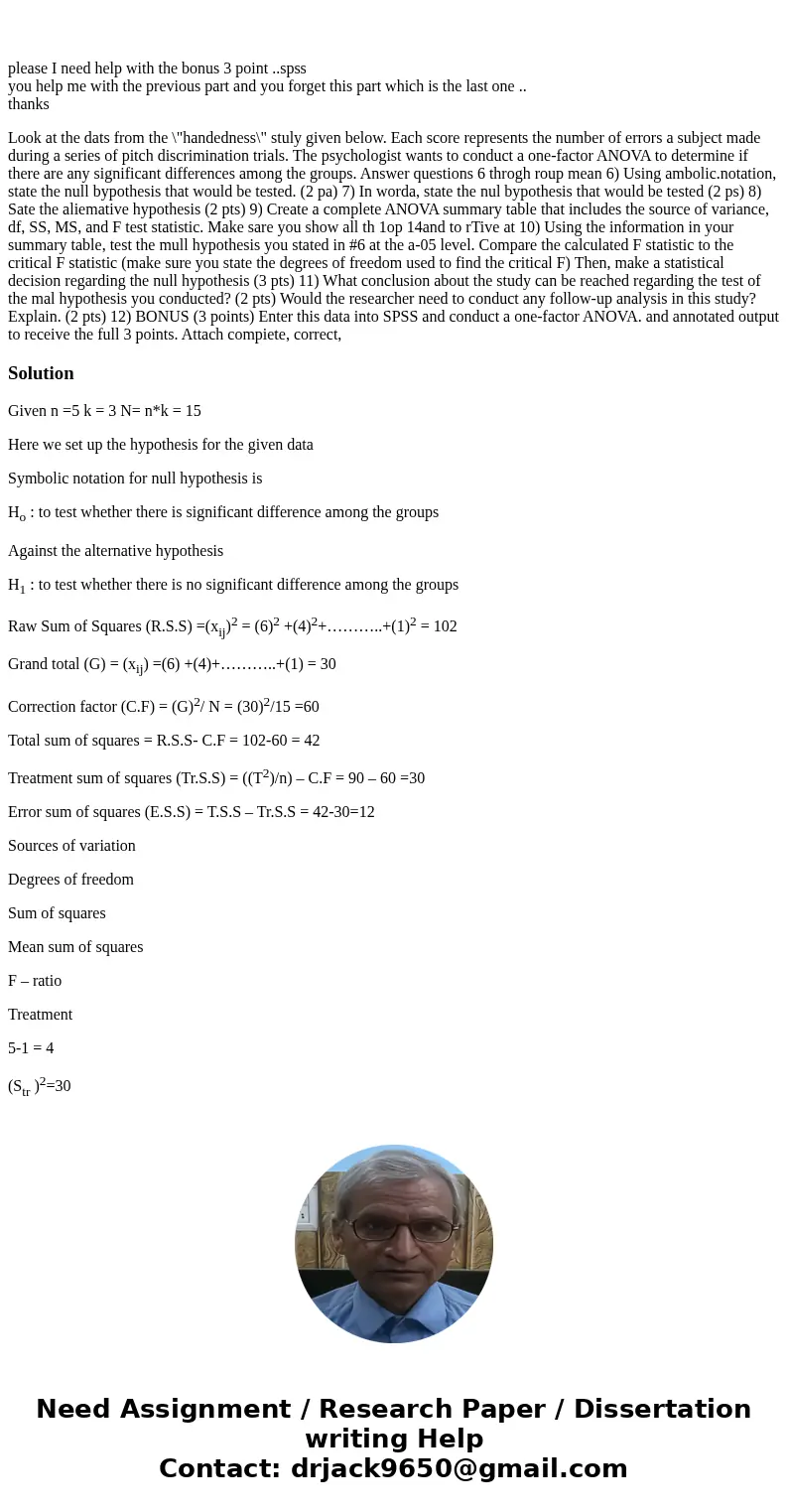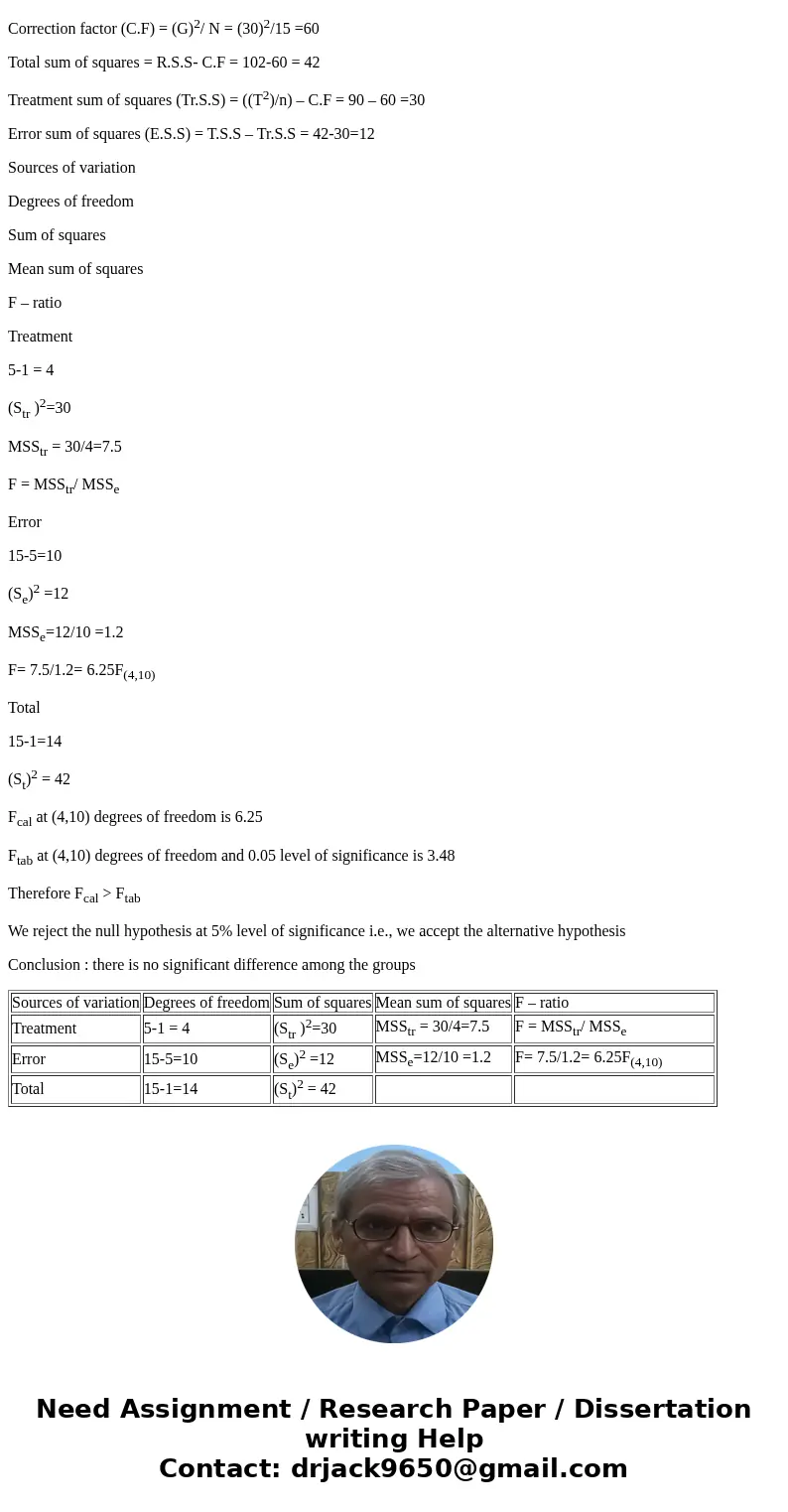please I need help with the bonus 3 point spss you help me w
please I need help with the bonus 3 point ..spss
you help me with the previous part and you forget this part which is the last one ..
thanks
Solution
Given n =5 k = 3 N= n*k = 15
Here we set up the hypothesis for the given data
Symbolic notation for null hypothesis is
Ho : to test whether there is significant difference among the groups
Against the alternative hypothesis
H1 : to test whether there is no significant difference among the groups
Raw Sum of Squares (R.S.S) =(xij)2 = (6)2 +(4)2+………..+(1)2 = 102
Grand total (G) = (xij) =(6) +(4)+………..+(1) = 30
Correction factor (C.F) = (G)2/ N = (30)2/15 =60
Total sum of squares = R.S.S- C.F = 102-60 = 42
Treatment sum of squares (Tr.S.S) = ((T2)/n) – C.F = 90 – 60 =30
Error sum of squares (E.S.S) = T.S.S – Tr.S.S = 42-30=12
Sources of variation
Degrees of freedom
Sum of squares
Mean sum of squares
F – ratio
Treatment
5-1 = 4
(Str )2=30
MSStr = 30/4=7.5
F = MSStr/ MSSe
Error
15-5=10
(Se)2 =12
MSSe=12/10 =1.2
F= 7.5/1.2= 6.25F(4,10)
Total
15-1=14
(St)2 = 42
Fcal at (4,10) degrees of freedom is 6.25
Ftab at (4,10) degrees of freedom and 0.05 level of significance is 3.48
Therefore Fcal > Ftab
We reject the null hypothesis at 5% level of significance i.e., we accept the alternative hypothesis
Conclusion : there is no significant difference among the groups
| Sources of variation | Degrees of freedom | Sum of squares | Mean sum of squares | F – ratio |
| Treatment | 5-1 = 4 | (Str )2=30 | MSStr = 30/4=7.5 | F = MSStr/ MSSe |
| Error | 15-5=10 | (Se)2 =12 | MSSe=12/10 =1.2 | F= 7.5/1.2= 6.25F(4,10) |
| Total | 15-1=14 | (St)2 = 42 |


 Homework Sourse
Homework Sourse